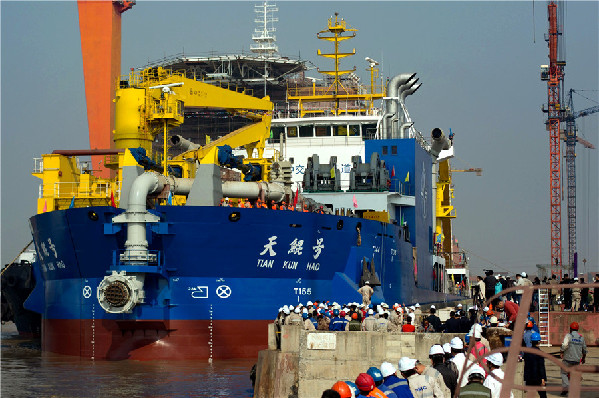Asia’s largest dredging vessel begins water tests
A Chinese-made dredging vessel, the largest of its kind in Asia, started water testing in east China’s Jiangsu Province Friday.
The 140-meter-long vessel, with the designed capacity to dredge 6,000 cubic meters per hour, can dig as deep as 35 meters under the sea floor.
|
|
|
The cutter-suction dredger Tiankun leaves the dock at a shipyard of Shanghai Zhenhua Heavy Industry Co Ltd in Qidong, East China’s Jiangsu province, Nov 3, 2017. The vessel, the largest of its kind in Asia, started water testing in Jiangsu Friday. [Photo/Xinhua] |
The vessel named “Tian Kun Hao” was funded and designed by Tianjin Dredging Co. Ltd. associated with China Communication Construction Co. Ltd. (CCCC) and was built by Shanghai Zhenhua Heavy Industry Co. Ltd.
“The electronic vessel is able to dredge an area the size of a soccer field with a depth of one meter within one hour,” said Wang Jian, deputy chief engineer of CCCC Tianjin Dredging.
He said on sea floor with rocks, the vessel’s 6,600-kilowatt dredging equipment can mince hard rocks and pump the silt into the vessel, where it can be automatically blown out as far as 15,000 meters away.
The vessel is expected to be delivered in June next year.

